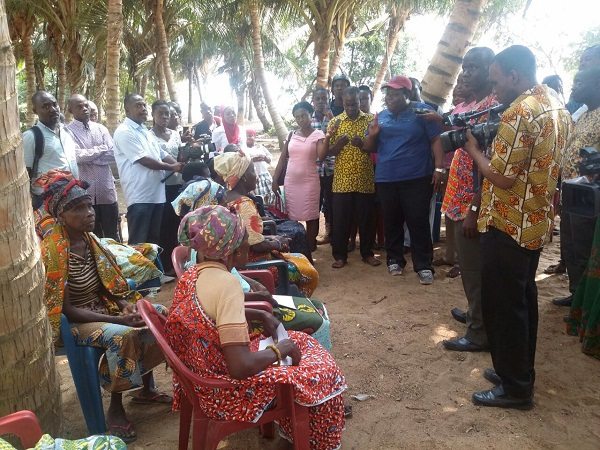
Introduction
For a lower middle income country such as Ghana, social protection interventions are necessary because a good number of the people live below the poverty line. Tackling economic and social disparities requires long term strategic solutions which stem from economic growth and shared prosperity. In the short term, programs exist to mitigate the harshness of poverty on some particularly vulnerable groups within society. The Livelihood Empowerment against Poverty (LEAP) was borne out of such need. LEAP is a cash transfer program aimed at alleviating short term poverty. LEAP is in its eighth year and this article seeks to assess its impact and sustainability within the Ghanaian society.
Social Protection in Ghana
A 2015 report on budget tracking and expenditure by IMANI Center for Policy and Education (IMANI) unveiled that a major challenge in the management of social protection in Ghana is due to the cross cutting nature of poverty, and its interconnectedness with all major sectors of the economy. As of May, 2014 there were approximately forty (40) social intervention schemes being run nationally. With all these programs being run concurrently, it becomes evident that challenges with duplication of function, poor monitoring and evaluation, complex systems for management of beneficiary information will be encountered. Alternatively, the broad array of social protection schemes presents a tremendous opportunity to maximize their impact and accelerate the human potential and economic development of the beneficiaries if properly targeted and synergized.
LEAP and Common Targeting Mechanism
Unfortunately, the social protection schemes in Ghana have not derived these synergistic benefits. This is partly because the Ministry of Gender, Children and Social Protection (MoGCSP), which in theory should be the steering body coordinating all these programs is yet to effectively discharge this role. With the onset of LEAP in 2007/8, a system of common targeting mechanisms was introduced. The rationale behind this was that LEAP in itself is simply cash transfer and its long term human capital development elements depended on proper integration with the other capacity development based social protection schemes. Examples of programs which are integrated with LEAP are national health insurance scheme (NHIS), and free education at the basic and JHS level.
If LEAPs success is to be measured by the implementation of common targeting mechanisms, then, the mark has been missed. As far back as 2009 to date, the progress on the implementation remains elusive. In the absence of fully operational common targeting mechanisms, there is a risk of beneficiaries being solely dependent on LEAP indefinitely. In this regard, LEAP breeds dependency and has drifted from being a short term intervention.
Sustainability of LEAP
In the US for instance, some social protection schemes are short term cash transfer programs to steer people into jobs. Such programs require beneficiaries to upgrade their education if necessary and apply to a certain number of jobs each week. The cash transfers are not intended to be a lifetime benefit. As such it delivers value for money, and it empowers the beneficiary to break out of the cycle of poverty. Unfortunately LEAP does not come with similar sustainability measures. This is an inexcusable lapse in the program design.
Furthermore, the report by IMANI indicated that no clear steering policy document exists for the program. LEAP is referenced as part of the National Social Protection Strategy and by the Ghana Shared Growth and Development Agenda. However, these documents do not address the crucial elements of long term sustainability and proper targeting as well as indicators and measures of success. So far, the key measure of progress is a ballooning number of beneficiaries.
Figure 1. Targeted LEAP household beneficiaries against actual household beneficiaries from2008-2015), Budget statements.
Note: Targets from 2008-2012 were established at the onset of the program, whereas 2013-2015 targets are revised following performance in preceding year, hence the marked dip in targets from 2012 to 2014.) [Source: Presentation by the Ministry of Manpower, Youth and Employment (MMYE) on NSPS (2008), Modern Ghana, Budget Statements, 2012, 2013, 2014, 2015] *Households targeted for 2013 not obtainable. **Data on actual households met for 2015 not available.
LEAP growth and performance since inception
Since inception in 2008 with 21 districts, LEAP has grown to 100 districts and to 77,006 households as of 2014. The current goal is to scale up the LEAP household beneficiaries to 150,000 by the end of the 2015. It is a great feat that LEAP is growing to cover more needy groups in society. However, if their economic situations do not change, then the government will be saddled with supporting these beneficiaries indefinitely. Besides, it is evident from the chart below that LEAP has not been able to meet the targets set for beneficiaries at inception and at strategic time points.
It is clear from the chart above that, consistently, LEAP targets have not been met. Hypothetically, unavailability of funds may have resulted in these gaps. However, based on that hypothesis, it becomes inefficient use of scarce resources each time the Minister of MoGCSP and her entourage make a personal payment to beneficiaries, be it a maiden LEAP district or not. The Ministry ought to work towards full automation of the LEAP payments (next paragraph) and not publicity stunts. This mode of delivery is also patronizing, neither does it empower the beneficiaries who receive these handouts.
Payment Methods for LEAP
On the issue of payment mechanisms LEAP has piloted a migration of its payment mechanism onto an e-payment platform from its current system of payment via the Ghana Post. As of Feb, 2014, nine districts covering approximately 7000 households are being run on the e-payment system on a pilot basis. So far, MTN Ghana (mobile money), Ghana Interbank Payments Systems Solutions (GhIPSS) and Aya Technologies are the technologies being employed. Complete migration of the payments onto these platforms will improve efficiency and streamline the process. However, with electronic migration must come higher prudence and tighter scrutiny in identification of beneficiaries and record management. This is in view of the ghost name debacles that have plagued institutions such as the National Service Scheme, Micro and Small Loans Center, and the Controller and Accountant General’s Department.
LEAP successes and challenges
The report from IMANI highlighted positive externalities of LEAP on NHIS registration and basic school and JHS enrolment as expected, since these programs were integrated with LEAP by design. Findings from an impact assessment performed by University of Carolina and the Institute of Statistical, Social and Economic research at the University of Ghana Legon (UNC/ISSER) support IMANI’s research results.
The report by UNC/ISSER also indicated that LEAP transfers make up 11% of household consumption of beneficiaries and suggested that, at that rate, Ghana lags behind other countries such as Kenya, Zambia, South Africa, Mexico and Colombia where contribution of cash transfer social schemes to consumption of participants range from 20-30 percent of the total mean consumption. They concluded that value of cash transfers may be too low to have significant impact with regard to nation building and national development. This supports the rationale that a core number of better targeted beneficiaries, receiving the full synergistic benefits from other schemes might deliver greater value for money, than the current practice of spreading the resources too thinly with different social interventions targeting different groups.
Figure 2: The Minister for Gender, Children and Social Protection supervises cash payments to LEAP beneficiaries (2015). [Source: Graphiconline.com]
Recommendations
Protecting the vulnerable groups in society is the mandate of any caring government. To achieve better value for money it must be executed within the context of the nation’s macro policies. Job creation; Diversification of exports; Development of infrastructure; roads, electricity, water, etc… Synergy of LEAP and other capacity building interventions and skills training should steer beneficiaries into these areas for macro-economic growth and sustainability. Secondly, this approach is a more permanent way of narrowing the poverty gap in the country.
Conclusion
LEAP should be viewed as an incubator, one that shelters individuals for a while, before releasing them to stand on their own feet. LEAP to date has received glowing reviews from beneficiaries. But that is not surprising because ‘free’ money, no matter the value, improves the condition of the recipient to some extent but for a growing economy, we must not settle for mediocrity. The easy part of handing out money has been done. Ayekoo LEAP! It is now time for the hard work of learning to stand on one’s feet. Can the LEAP program mature into one that develops tax paying, making members of the society? It is only then that the country will truly eradicate poverty.



